Illustrations
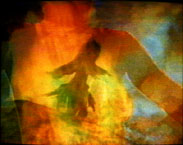
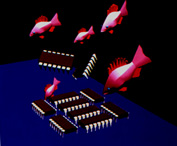
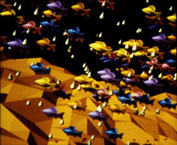
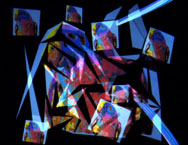
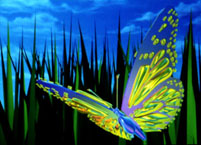
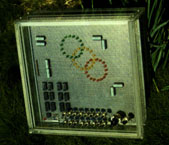
Percussions of Strasbourg
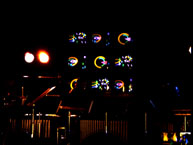
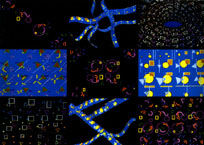
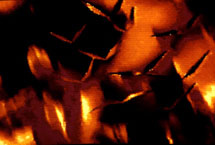
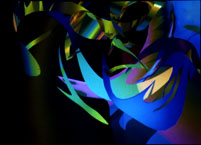
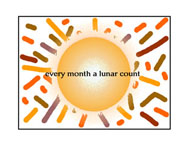
Transcript of Talk by Vibeke Sorensen
While enjoying the support of many good men and women, I must confess that my life has been shaped by a series of "glass ceilings" which, at the time they occurred, I did not fully recognize. In 1974, I applied to an ivy league school to continue studies in architecture. At my interview with the chairman of the architecture department, I was told "According to your records, we have to accept you, but because you're a woman, you'll never get a grade higher than a C." I left. In 1976, I tried again at another well known school. Everything went well until the middle aged white man made the inexplicable comments, "You can't come here!" he said. "Why not?" I asked. "I won't be able to watch my children grow up!" he answered. I later learned that I was not accepted despite the fact that I held a prior letter of acceptance from the same department. And just a few years ago, I was asked to apply for an important position and was told that, while I was one of 3 final candidates, the board had one serious objection to my getting the job. I asked "Is it because I am not a scientist?" "No." "Is it because I have little administrative experience?" "No." "You don't mean..." "I am so ashamed to tell you this, but they don't want you because you're a woman." Well, with President Bush's veto of the Civil Rights Bill, this sort of thing could be legalized.
In 1974, I reacted to these conditions by making Etyma, a short film which explored the relationship between the history of written language and patterns of thought, especially the origins of the word "woman," and I asserted my identity as a woman experimental filmmaker through symbolic visual poetry. Having made that filmic statement, I continued on to my true love, musical animation - setting paintings and pictures in motion and performing images in real time the way a musician performs a musical instrument. I mounted gallery exhibitions which were interactive environments, and I made many pieces, solo and collaboratively, including Voyage with Tom DeWitt and Dean Winkler. This piece is an exploration of inner and outer space as inspired by the Voyager mission to Jupiter.
In 1983, my career and artistic aspirations came into direct conflict with my relationship with a man. In order to work through this crisis, I looked to my Scandinavian heritage and found strength and part of the answer - cultural memory of Pagan origins from Viking times, where women were interdependent and independent, where they could own land, run commerce, divorce their men, fight in battles, and finally, help to solve difficult problems of survival in a poor land. I became interested in the transformations of mythic symbols of this, my culture, especially the summer solstice in Denmark. What was originally a fertility ritual where bonfires were lit to encourage the sun to make crops grow, was adopted by the Christians in the late middle ages. They used the fires to burn women who did not conform, who were too independent, who they labeled as witches. About 8 million women over a 200 year period were killed this way in Northern Europe, starting in the late 15th century. Today, effigies of witches are set on top of the fires, and many young women discovering this sad history are shocked to learn it. Nonetheless, with the Age of Reason and a strong cultural memory, women in Scandinavia today enjoy some of the most progressive public policy affecting education, employment opportunities - in public service as well as in government, and child care, some of the best in the world. Generally speaking, the Danes know that their people are their most valuable natural resource and invest in them, women and children included. My piece Solstice deals with these issues and images. It uses the popular form of the music video with 3-D computer animation, and seeks to infuse new ideas into that form. It's difficult content in a smooth medicine. It served its purpose - it helped me to understand why my values and expectations mismatch much of the rest of non-scandinavian society, which does not embrace the same history of strong and capable women.
In the stereoscopic Reflection Studies, I explore the paradox of depth in surface, coincident spaces which are impossible. These pieces have led me to a project which, I am happy to say, has been funded by the National Science Foundation. Called "Interactive Stereoscopic Animation," it is what some people call "Virtual Reality," where scale of the image is considered an important component in effective interaction with space and 3-D data in the computer. Using large gestures in a stereoscopic video projection environment, I intend to bring paradigms for interacting with space from painting, sculpture, dance and performance art, to bear on computer graphics. The idea is to move with large scale gestures and see wall sized projections of modified visual data at full temporal and spatial resolution. Two Silicon Graphics Iris computers locked together are run through 2 video projectors at 1000 by 1000 resolution in real time at the San Diego Supercomputer Center (SDSC). Research is with Dr. Lynn Teneyck, crystallographer. This is unusual because the artist's needs are driving research and development of a system which will be used by scientists. This is the reverse of the normal situation where artists use the "leftovers" of science and research. This project is continuing.
"This figure is from a shelf in France called Laussel, and it is a very important and suggestive figure. This little Venus of Laussel is holding in her right hand, elevated, a bison horn with thirteen vertical strokes. That is the number of nights between the first crescent and the full moon. The other hand is on the belly. What is suggested - we don't have any words or writing form this period- is a recognition of the equivalence of the menstrual and lunar cycles. This would be the first inkling we have of a recognition of counterparts between the celestial and earthly rhythms of life.This gave me strength and inspired me at a 4th period of difficulty in the last year. The bottom line is that there is not a conflict between numerical reasoning and women's nature. There is simply no math gene! Numerical ability, scientific observation and artistic expression are basic to women's nature. It seems that this knowledge and confidence has been lost from the general population. Women in computer graphics are reclaiming this territory and my piece, Every Month a Lunar Count, is made on the MacII computer to emphasize these points.Alexander Marshack, in his formidable volume "The Roots of Civilization," deals with a number of staves, or staffs, of this kind which are notched. He studied a number of them with a microscope and found that the notches were not made by the same instrument and the same time on any one piece. He says these are probably time factored counts. Many of them suggest very strongly counts of the lunar cycle. So maybe, out of the women's concern for this rhythm that they will have recognized in their own bodies, we come to mathematical and even astronomical reckoning."
P. 12 - 13, "Transformations of Myth Through Time," Joseph Campbell, 1990, Harper and Rowe, Publishers
My most recent work is less overtly political and more immediately linked to nature. I again fuse my gesture through computer digitized video and painting, to nature. One of our most urgent concerns is the fate of the earth, perhaps we can help provide solutions through our work.
Vibeke Sorensen
October 12, 1990










